
Mayan civilisation stretches from the of south Mexico, through Belize, Guatemala, El Salvador, and all the way down to Honduras. Although the Mayan political and social order collapsed with the Spanish invasion and the creation of the state of Mexico, the culture of the Mayans survives and is thriving. Their many languages, textiles, arts and crafts, medicines, spiritual traditions, as well as their methods of agriculture, being just some examples of the wealth of traditional Mayan culture that exists today. While for many people the Mayans are most famous for Chichén Itzá, or their complex calender system; for those interested in sustainable agriculture, the Mayans are most famous for their way of farming. While Eurasian farmers went down the destructive path of tilling and animal husbandry, the Mayans plotted a different course. Anyone who has done a permaculture course, or has spent time learning about non-Western methods of agriculture, will have heard of the milpa; a polycultural system of agriculture based on the cultivation of the ‘three sisters’, maize, gourd and beans. This method has long been held up as a model of sustainable farming as it requires no fertilizers, no machinery and produces a nutritionally varied harvest in a small plot of land. I was therefore quite surprised to find, after venturing into the heart of the Yucatan peninsula to learn about the milpa first hand, Mayan farmers who were arguing that the milpa is a no longer suited to wider social and ecological realities, and needed to be replaced with new methods of agriculture that they themselves were developing. But before we look at these contemporary developments, we should first take a closer look at the methods of the traditional milpa, as well as its wider social and culture significance, to better understand the importance of the milpa to Mayan civilisation.
Mayan Civilisation & the Spanish Invasion
Central America is considered to be one of the ‘cradles of civilisation’, places where complex societies began forming independently of other societies. The first of these cultures were the Olmecs, which emerged around 1500 BC, with the first traces of Mayan culture also dating back to this time. All large civilisations grow in tandem with the development of some particular staple crop or crops, and in the Pre-Classical Period of Mayan civilisation (2000BC – 250AD) we already see the cultivation of the three sisters (maize, gourds and beans) along with other crops such as pepper. By 750BC we start to see the first large Mayan cities, and by 500BC these cities have large monumental architecture. Mayan writing first develops around 350BC, and by this time the Mayans also had an advanced knowledge of mathematics and astronomy. Along with these cultural achievements, the Mayans also produced incredible pieces of art; sculptures, stucco, murals, ceramic, and textiles. Mayan political organisation was complex, but was often based around a divine ruler and a set of aristocratic families. Unlike the Aztecs and the Incas, Mayan civilisation was never centralised into a single empire but rather existed as a diverse and constantly changing set of chiefdoms, vassals, and other types of polities. War was also prevalent part of the Mayan culture, with the various polities finding cause to war with each for all the reasons human beings are prone to go to war over.
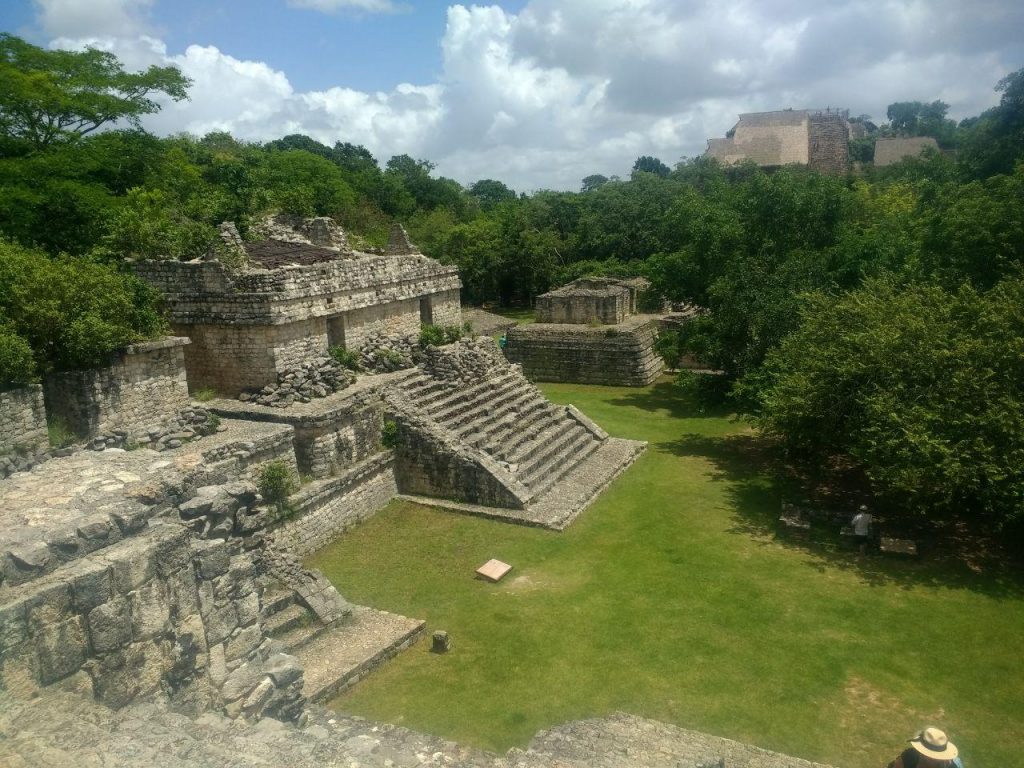
In the early 16th century the Spanish arrived in the Yucatan peninsula, and, soon after their arrival began with their campaign of conquest and organised pillage. Unfortunately for the Mayans, the arrival of the Spanish coincided with a particularly fractured period of their history, with many of the polities divided against themselves. Compounding this was the decimation of the Mayan population by the diseases introduced by the Spanish colonisers, and their relatively basic weapons and armour compared to the Spanish invaders. This confluence of factors meant that the Spanish were able to establish themselves on the peninsula. Once established they began setting up large plantations to farm cash crops (mainly sugar cane) to be sent back to Europe. The Spanish colonisers had no intentions of working these fields themselves, and so the plantations needed to be worked by the Mayan people. As no one would freely choose to work hard manual labour for violent bosses to earn little or no pay, the Spanish lured the Mayan people into their plantains through a system of debt peonage. After being disposed of their lands, many Mayans had little choice but to take on debts from European settlers to survive. However, taking on this debt meant giving up their freedom, and this freedom would not be returned to them, no matter how much they paid off. Not even death meant the end of their bondage, as the debt was inherited by their children. This economy of plantations and debt peons would become widespread, and a few generations after the arrival of the Spanish much of the Mayan population of Yucatan were being born into a condition of perpetual bondage.
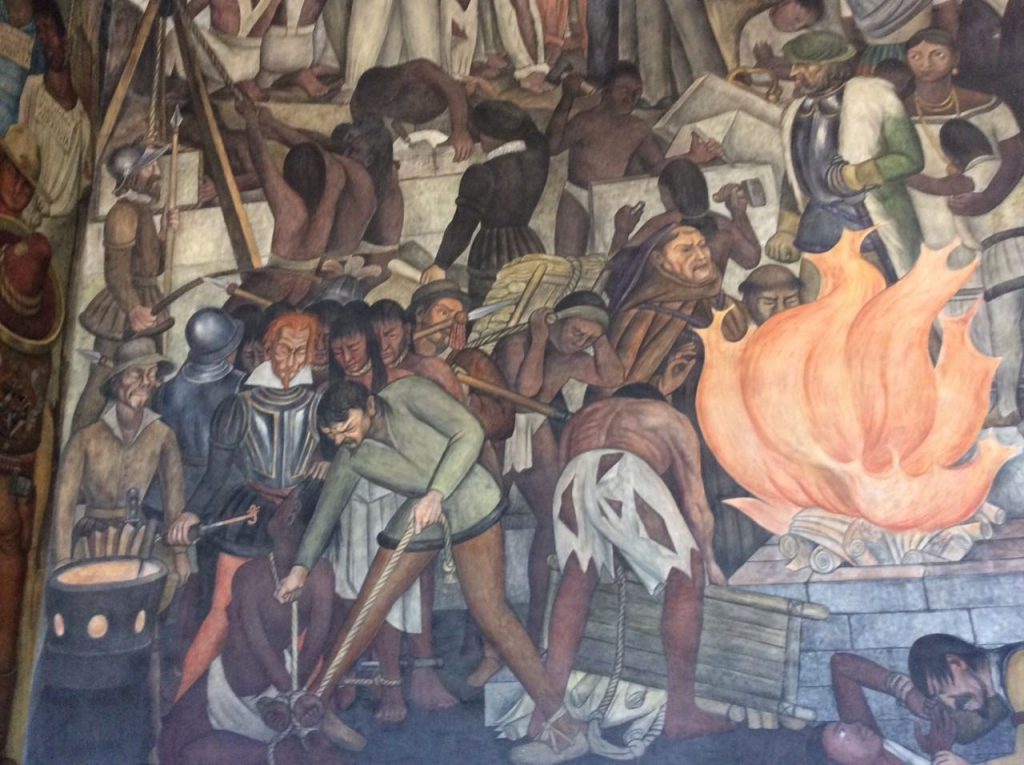
But the Spanish were not only interested in using the locals to enrich themselves; they were also after their souls. Inspired by Christ’s message of love and compassion, agents of the Church went to ‘New World’ to violently suppress Mayan culture and replace it with European Christianity. With Mayan culture already suffering under the strain of plague, the collapse of its political and social order, and general economic dispossession and bondage – the Church would add to this with an organised campaign of cultural extermination. In 1562 Diego de Landa established a tribunal of Inquisition to root out the ‘heathen’ cultures of Yucatan, which reached it zenith in the the Auto de fe de Maní – an order to destroy all the important Mayan objects, images and books they could get their hands on. The Mayans had developed a complex system of writing, but the destruction of these books, along with the huge disruption to their societies, meant that much of the ancient history and knowledge was lost. The Mayan people had their roots cut out from under them and burned.
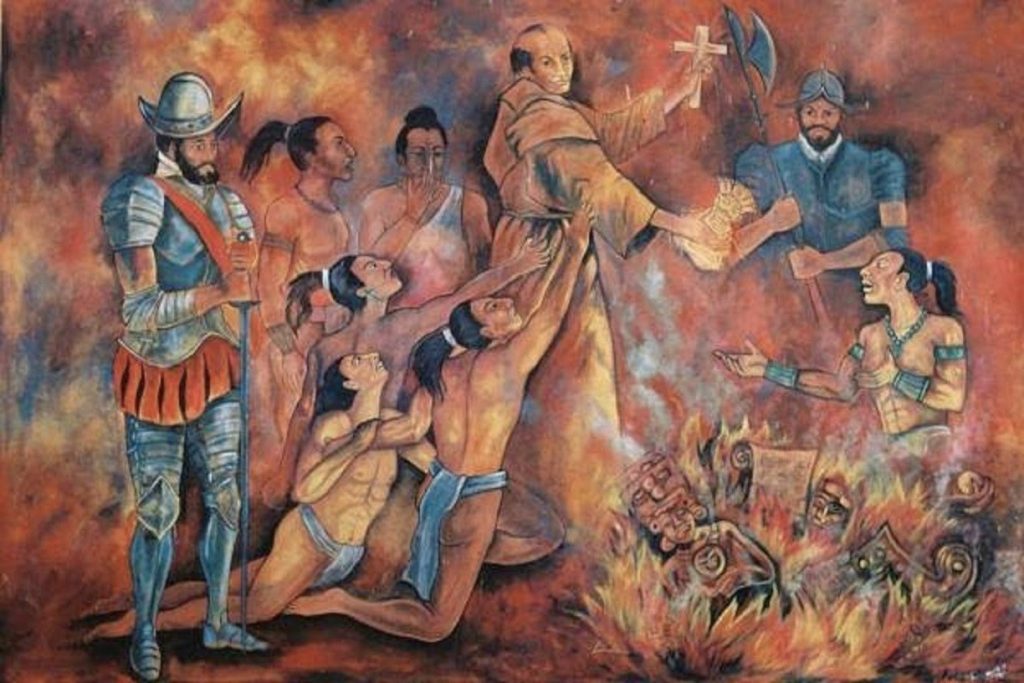
However, although many Mayan people were forced into a system of bondage, and much of their sacred objects and writings cast to the fire, they proved themselves to be incredibly resilient people. Beginning with the arrival of the Spanish, and throughout the next five centuries, the Mayans would continuously organise rebellions and campaigns of resistance against Spanish and Mexican State forces. The largest of these campaigns was the Mayan Social War (also known as the Caste War), which went on for from 1847 to 1901 and saw the establishment (and later destruction of) the Mayan State of Santa Cruz. But the Mayan Social War is merely the tip of the iceberg in many centuries of regional, community, and individual uprisings. Even today the Mayan people continue to struggle for the right to organise themselves from the ground up, with many Mayan communities in the state of Chiapas having expelled the Mexico State, and now govern themselves on the community level under the banner of Zapatismo. And in was not only in the field of battle that the Mayan would resist the colonial invasion. Despite centuries of Christian campaigns to spiritual subdue the Mayans, and force them to adopt European customs and spiritual practices, they proved spiritually intractable. Although Christianity spread, it only did so by adapting itself to local traditions and customs; putting Christian names on Mayan traditions. Many of the old ceremonies, Gods, stories, festivals, and the symbolic understanding of the world, survived.
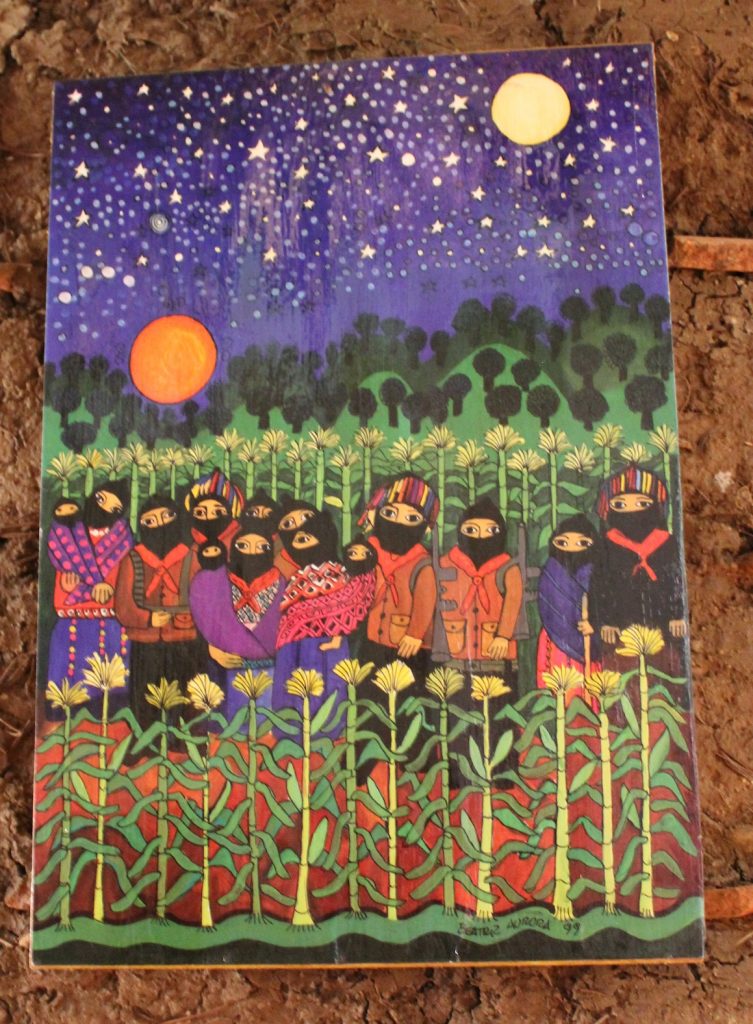
And while much of the population of Yucatan were forced into bondage, the thick jungles of Yucatan offered refuge to many independent Mayan communities. It was these communities who would best preserve the Mayan culture: the language, spiritual practices, textiles, crafts, and agriculture. And what is important to remember is that all of these fields of human activity are intertwined with other each, support each other. Mayan agriculture is rooted in the spiritual practice, which in turn is based in the language; but we can just as easily say that the language is rooted in the Mayan relationship with the land. The survival of the milpa contributed to the survival of the Mayan culture. It is in this wider historical context of colonialism and resistance that the milpa should be understood. On the one side we have the economic colonisation of Yucatan, with many Mayans being forced into the system of debt peonage to work the large plantation that were being established. On the other we have the spiritual colonisation, with the Christian Church trying to cut the links of the Mayan people to their Gods and traditions, and establish themselves as the new, centralised, spiritual authority on the peninsula. The milpa finds itself exactly in the intersection of these two forms of colonisation, with its continuation ensuring the economic and spiritual survival of the Mayan civilisation. It is not just a method of feeding oneself; it is a form of resistance against invaders who wanted to exploit the land and it’s people to enrich themselves. It is a way of protecting the Mayan cultural heritage; a way of connecting with the Gods, the land, and ancestors. This is a point we will return to later.

The Milpa
Along with the cultural importance of the milpa, it is also a very innovative system from the perspective of sustainable agriculture. Despite the fact that it has far fewer inputs in terms of energy and resources than modern farming, and is practised on the poor and rocky soils of the Yucatan peninsula, it produces a large and diverse yield, and (when practised on a small scale) is enviromentally sustainable. The foundation of the milpa is the ‘three sisters’: corn, beans, and gourds. These three crops complement each other, both; nutritionally (with corn providing the carbohydrates, beans the protein, and gourds the vitamins and minerals), and ecologically (with each crop occupying a different niche in the ecosystem and assisting each other in their growth). The maize provides the structure for the beans to climb, the beans fix nitrogen in the soil (making it bio-available to other plants), and the gourds provides a layer of ground cover (protecting the soil from the sun, and stopping the emergence of any weeds). For many thousands of years these crops have been the basis, not only of Mayan agriculture, but of Mayan civilisation, making it possible to feed large settled populations. Along with the three sisters, the milpa also contains a huge variety of other edible and medicinal plants (fruits, chillies, leafy greens, root vegetables, spices), as well as other useful plants for building, weaving, making tools, etc. Animals are also an important part of the milpa. For example, various traps are laid to catch small mammals like gophers for their meat. Of particular importance to the milpa are bees, who provide honey (along with other medicinal and edible products) and pollinate the milpa. The traditional milpa is a holistic system, providing everything needed to lead a self-sufficient existence.
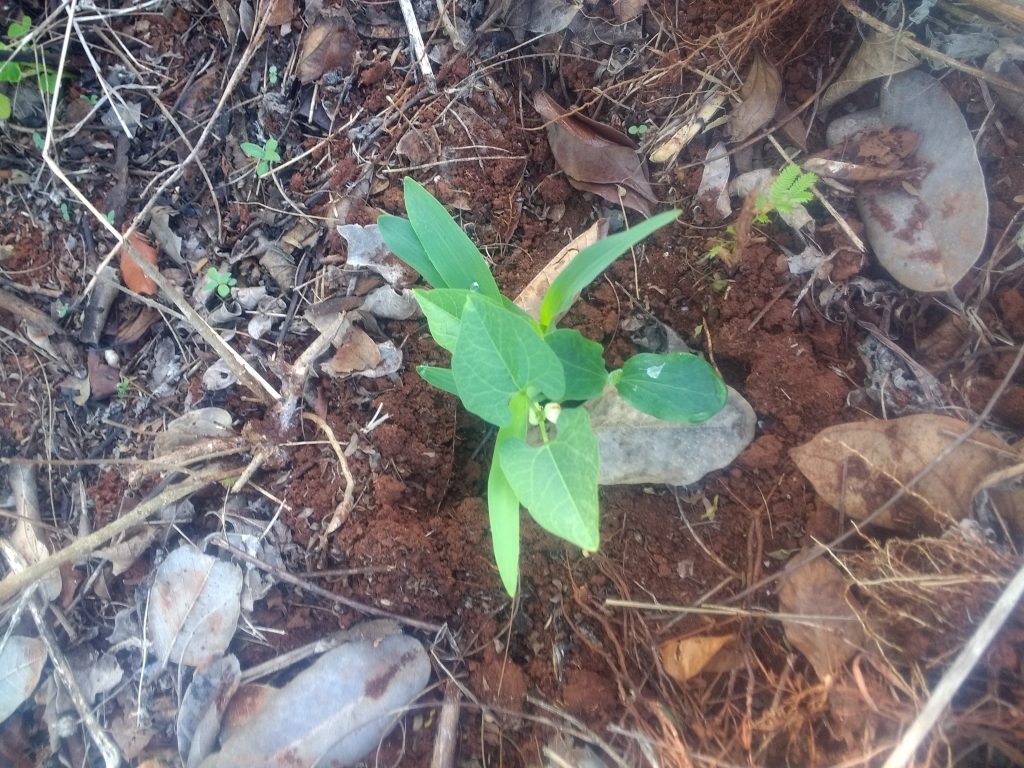
This is made all the more impressive when looking at the challenges Mayan farmers on the Yucatan peninsula face. The peninsula is a made up of very porous limestone; so porous that there are no rivers in the northern half of the peninsula. Most milperos have no access to water to irrigate their fields and are therefore entirely dependent on rainwater. This means that cultivation can only take place during the rainy summer months. Another problem for the milperos is the lack of soil on the Yucatan peninsula, with the limestone base often protruding through the thin layer of organic material. Despite this lack of soil, the milpa is traditional cultivated without the use of fertilizers. Well, without any external fertilizers. All farmers need at least some fertile material in their land to feed their crops, and so the milperos use the fertility of the jungle. The milpa begins in the regenerative force of fire. The milperos selectively burning a piece of jungle to return the nutrients to the soil and create a patch of light for their sun-loving maize. After a couple of years of cultivation, the land is left alone, returning it to the jungle for at least nine or ten years to allow for regrowth. As long as the land is given this period of rest, without any shortening of the fallow period, the milpa has a net positive effect on surrounding ecosystems and doesn’t lead to the degradation of the land.
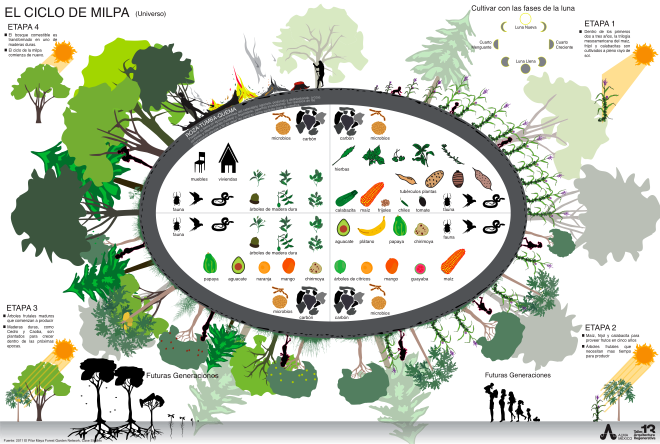
So far we have seen that the milpa does not make use of irrigation or external fertilizers (and obviously without any pesticides), but these are not the only factors that make it so sustainable. Just as impressive is the fact that the milpa it is managed entirely by hand, without the use of any large agricultural machinery. And not just modern industrial machinery, the milpa doesn’t even make use of animal powered ploughs (as the milpa is a no till system). This is made possible by the fact that the milpa works with nature, allowing it to do all the work that, in modern farming, necessitates the use of heavy machinery. With the milpa there is no need to till the field, add fertilisers, add pesticides, irrigate, or weed. The main work is in burning, planting and harvesting. By listening to nature, by tuning into and working with the natural rhythms, the milpero reduces their workload and avoids all the extra financial and environmental costs associated with agricultural machinery. When compared to modern monocultural farming, the milpa is an incredibly productive and diverse system with very low inputs, and is far less environmentally destructive. Another advantage of the milpa is that is is the basis for an autonomous life, providing them with everything they need to live a holistic and fulfilling life. This is in contrast to commercial agriculture, where farmers produce a single crop to be sold en masse, and are therefore just as dependent on global markets as everyone else.
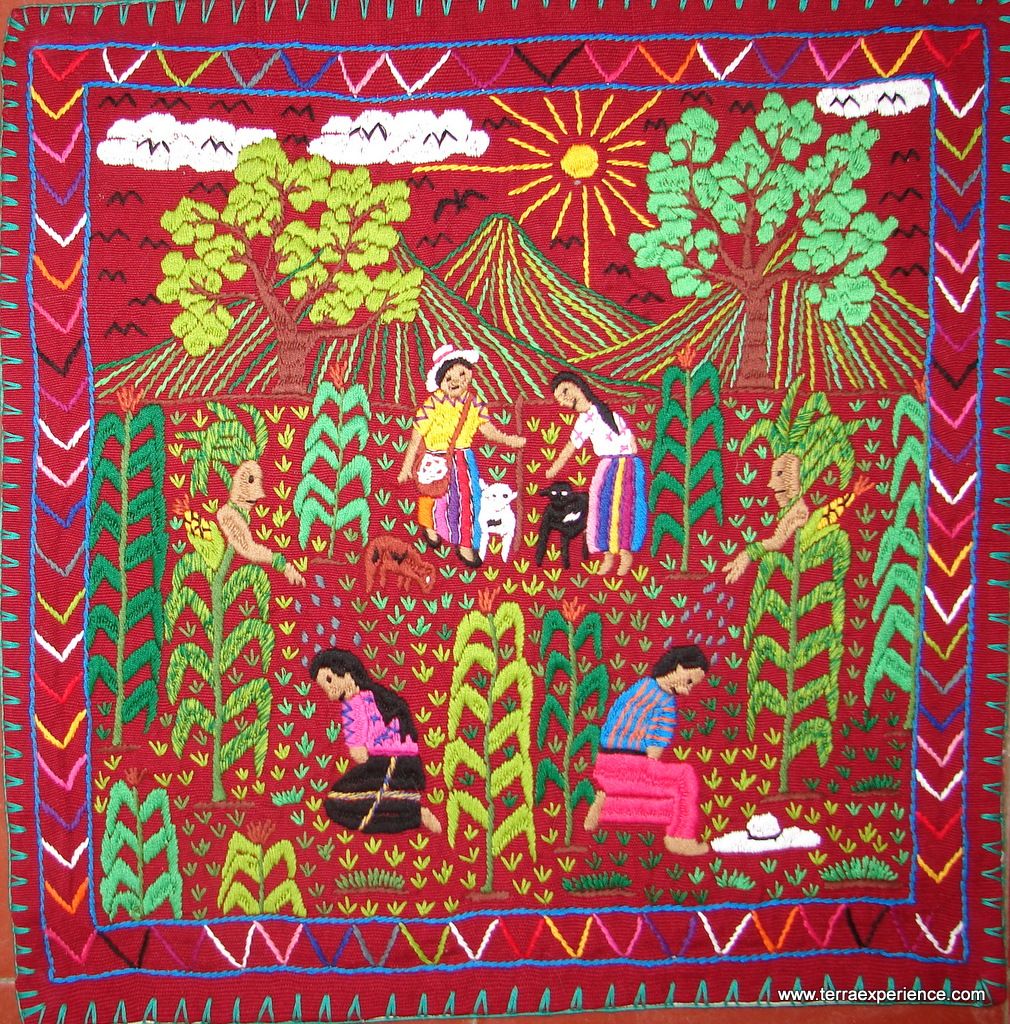
What the Mayans achieved was the creation a system of agriculture that was perfectly adapted to their surrounding, one which was even able to support large civilisations for millennia. For these reasons, the milpa is held up in permaculture as a model of sustainable harmonious agriculture. It was therefore to my great surprise that, after travelling the small town of Tihosuco in central Yucatan in search of the milpa, I met a Mayan farmer, Armando Poot Chable, who told me that the traditional milpa was no longer viable, and was instead developing a different method of agriculture better suited to today’s world.
Before looking at his reasons for moving away from the traditional milpa, and the system of agriculture he was developing, it is worth mentioning the history of the town of Tihosuco. Founded by the Mayan people long before the arrival of the Spanish, in the 15th century Tihosuco was the capital of Cochuah, one of several Mayan polities that existed at the time. It was conquered by the Spanish in 1544, offering some of the fiercest resistance on the peninsula, and shortly after was made the Jesuit base of operation in Yucatan. Because of this colonial activity, the town became home to white and mestizo residents, although the main part of the population was always Mayan. During the Mayan Social War Tihosuco was one of the most important centres of resistance, coming into Mayan control early on in and being the site of many military exchanges between the Mayans and Mexican State forces. In 1901, when the Mayan State of Santa Cruz was finally defeated, Tihosuco was largely destroyed and abandoned. It remained in this state of abandon for the next 30 years, with the colonial buildings quickly being taken over by the surrounding jungle, until a group of Mayan people from a neighbouring village came across the ruins, and decided to repopulate the town. They began clearing away the already well established jungle and restoring the old colonial buildings. Because they were in the middle of the jungle, several days away from the nearest town, these early pioneers had little access to outside resources. Instead they made use of what they found around them, just as their ancestors who had originally founded the town had done before them. Today, Tihosuco is a lively town, surrounded on one side by old-growth jungle and the other by new-growth jungle.
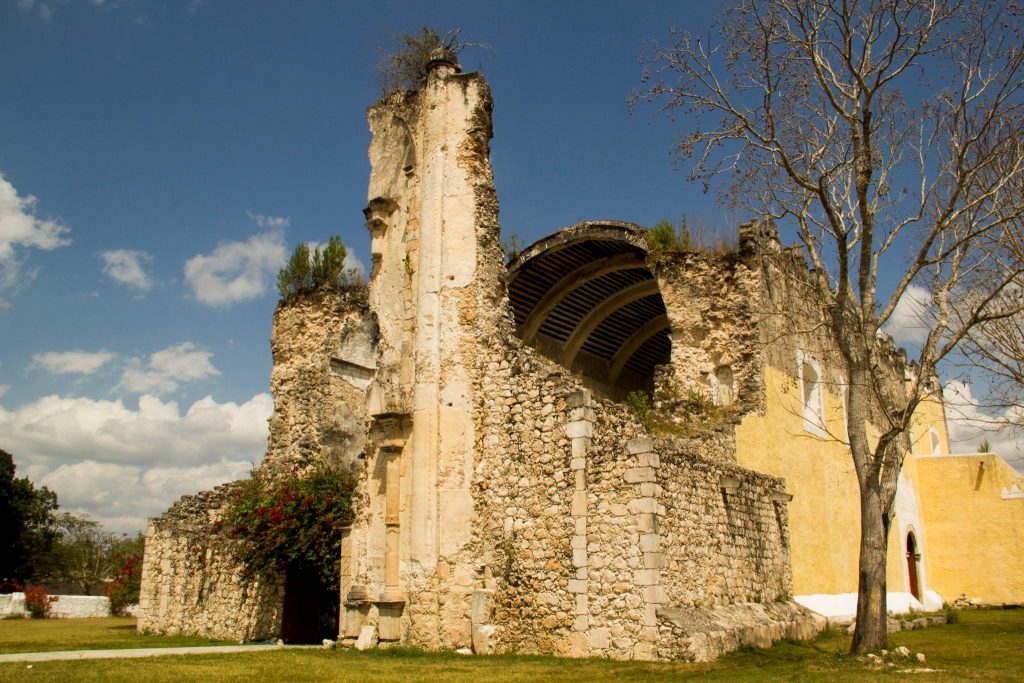
It was in the town of Tihosuco where I met the farmer Armando Poot Chable, who explained to me the reasons why the milpa no longer serves its purpose; the main one being climate change. Since the 1970’s/1980’s, the rainy season has become shorter. The rains no longer reliably fall in May as they use to. Milperos now generally have to wait till June for Chac, the God of rain, to answer their prayers, causing the maize to begin its ascent skyward. As the milpa is entirely rain irrigated, and the maize needs water to germinate and begin growing, the maize has about a month less time to develop. So by the time December rolls around, and the cold temperatures means the ears of corn stop growing and start ripening, the corn is still very small. This reduction in harvest means that bigger pieces of land have to be cleared in order to produce the same harvest. This problem is exacerbated by the other big problem facing the milpa and farmers on the Yucatan peninsula: the expansion of large commercial farms and cattle ranches. The expansion of these destructive and land consuming forms of agriculture means that every year there is less and less jungle to clear, and less land for the milperos to cultivate. In this context, every piece of jungle becomes precious and slash and burn tactics become less viable. Another problem with the slash and burn is the loss of the traditional methods of selective burning. Armando told me that, today, milperos are more indiscriminate with their burning, clearing huge swaths of jungle to plant a small section with maize. And often it is now only maize. Many milperos have been assimilated into the market and produce maize commercially, no longer bothering to provide for themselves all of the necessities of life from the milpa.
The Modern Milpa and Pitahaya
In the face of these challenges many Mayan farmers are developing new methods of agriculture, more suited to their contemporary environmental and social conditions. One such method has been developed by the above mentioned Armando Poot Chable. After coming to the conclusion that the traditional milpa systems was contributing to the deforestation of the Yucatan jungle, he decided to try a new type of agriculture, one with roots in the traditional milpa system, but without relying on the milpa’s slash and burn tactics. The decision he came to was that, instead of growing corn, he would grow pitahaya (dragon fruit). This change to the main crop solved both the problem of the rain, and that of the deforestation. It solved the problem of the rain because pitahaya is a perennial crop, making it is less reliant on the first rains in May. Instead it can soak up and store the rains when they come and have them ready to use when they start to produce fruit. Regarding the other problem of the traditional milpa, deforestation, the switch to pitahaya has two distinct advantages. Firstly, the pitahaya will produce for up to fifteen years. So instead of clearing the space every two years, it will be allowed to grow relatively unhindered for at least fifteen years. This means that the ecosystem has more time to heal and develop than with the traditional milpa. The other advantage is that the pitahaya grows in partial shade. So instead of the whole space needing to be cleared to give the maize full sun, the jungle can be left partially intact, with only some trees being selectively felled to create windows of light. A partially in tact jungle means habitat for many birds and other animals; it means little islands of biodiversity where plants and fungi can survive.
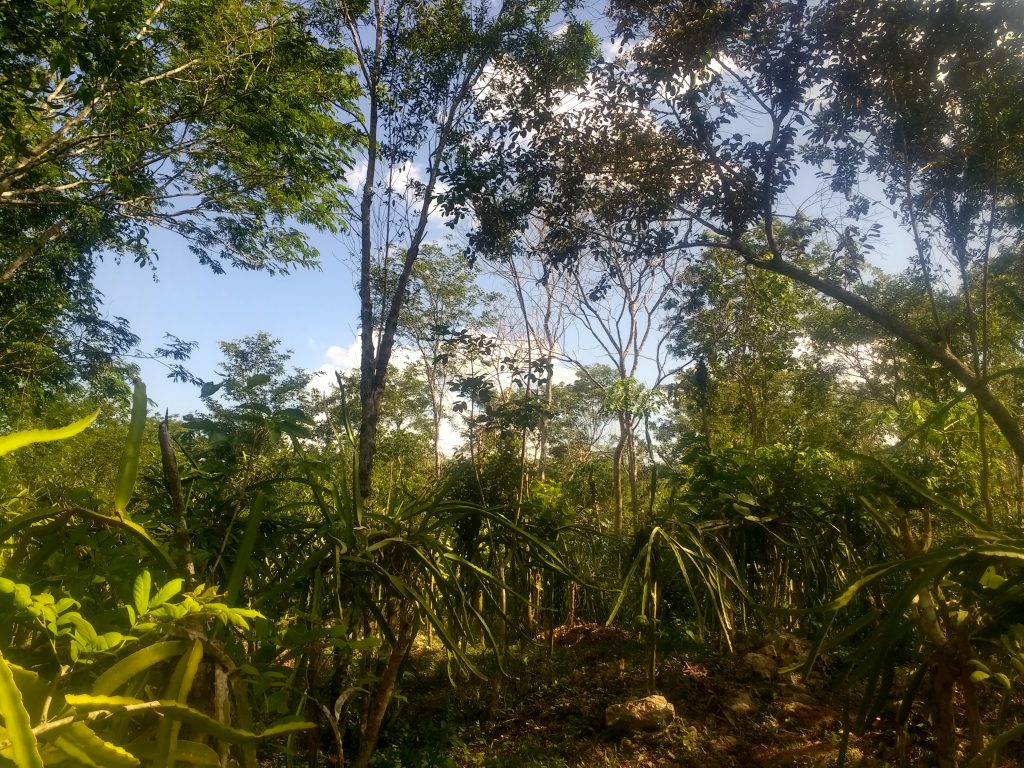

Although the main crop is pitahaya, there is also a huge array of other medicinal, edible and otherwise useful plants growing around the land. It seemed like every apparently wild plant actually had some use that Armando could tell me about.


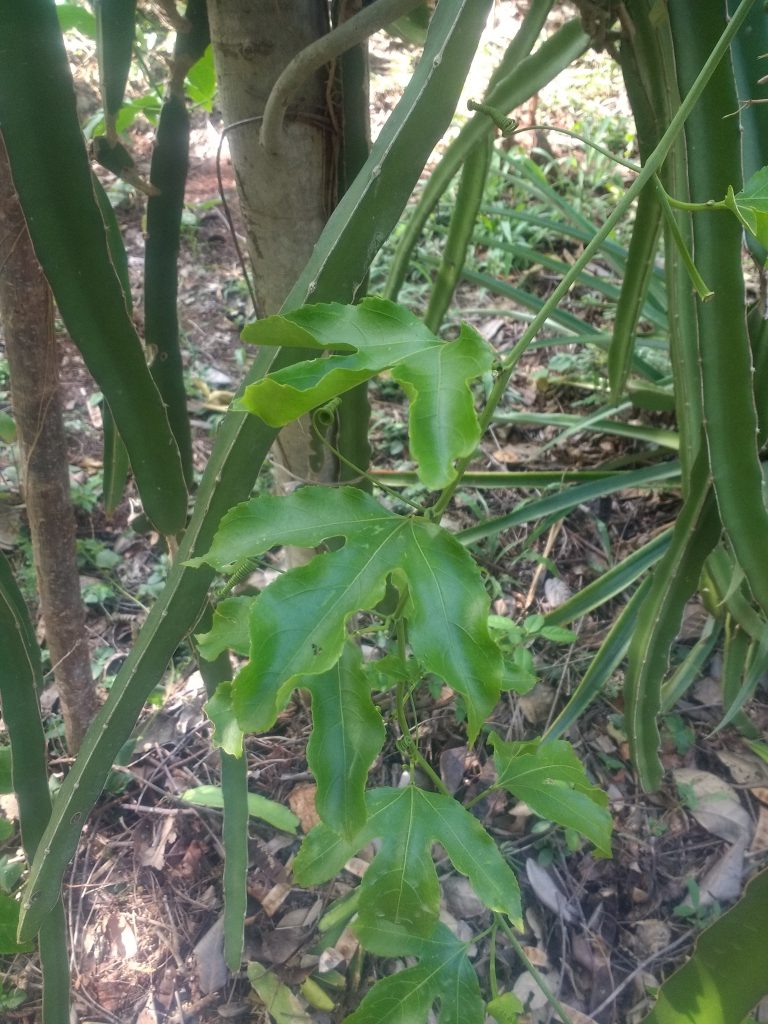
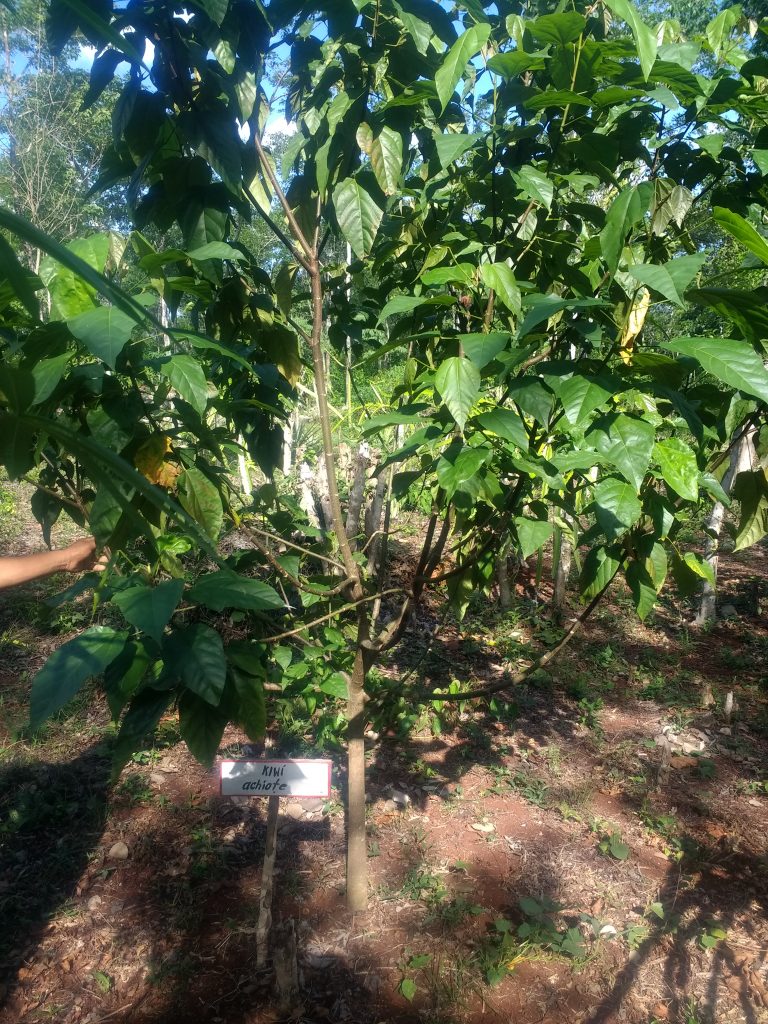

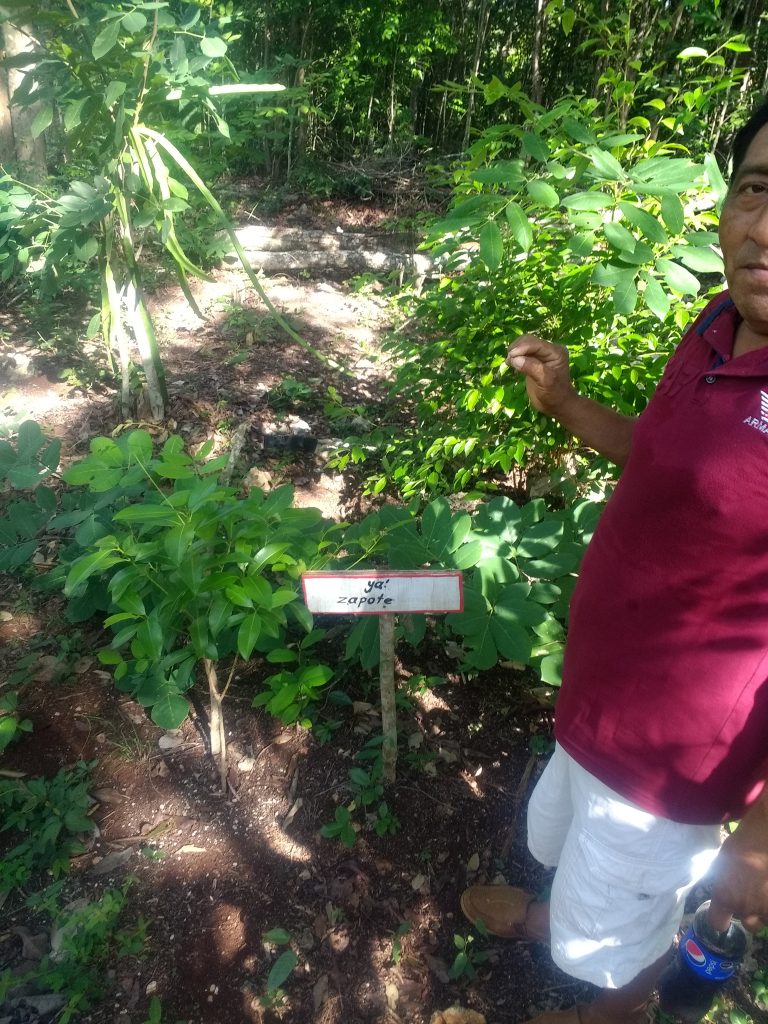

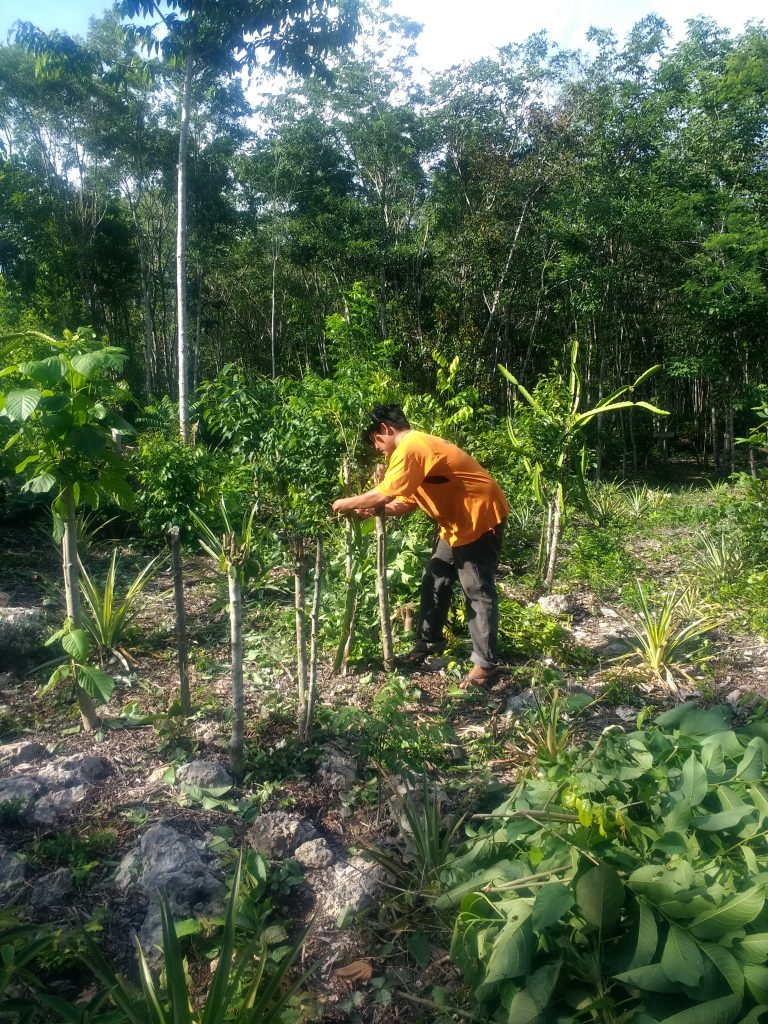
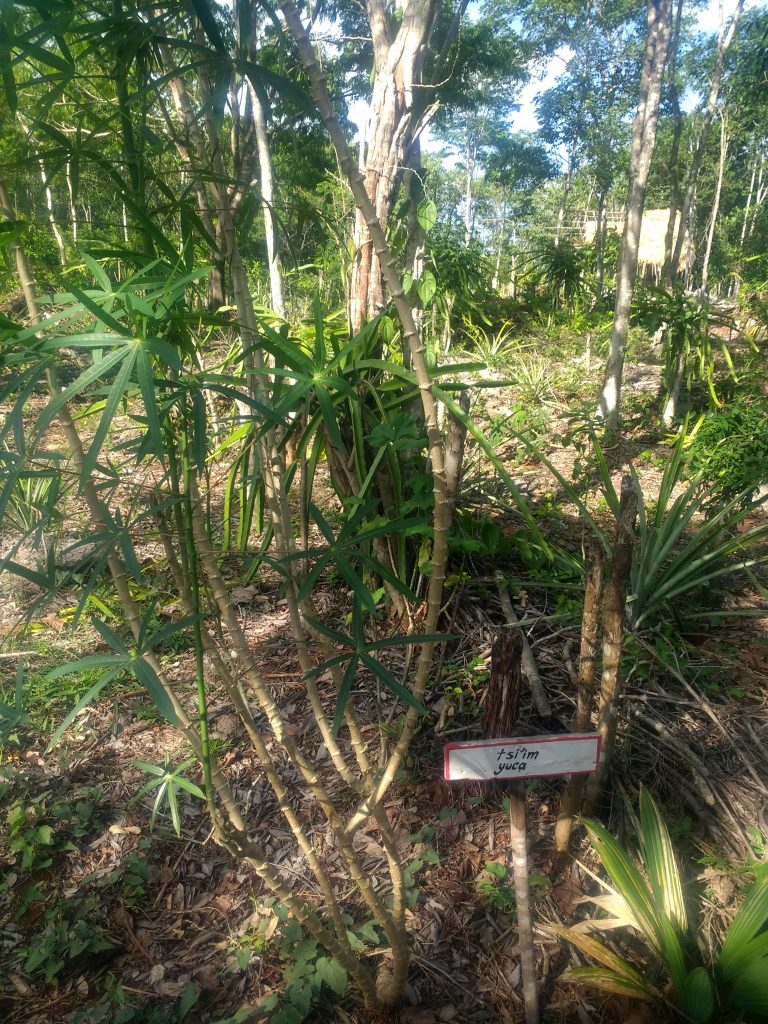

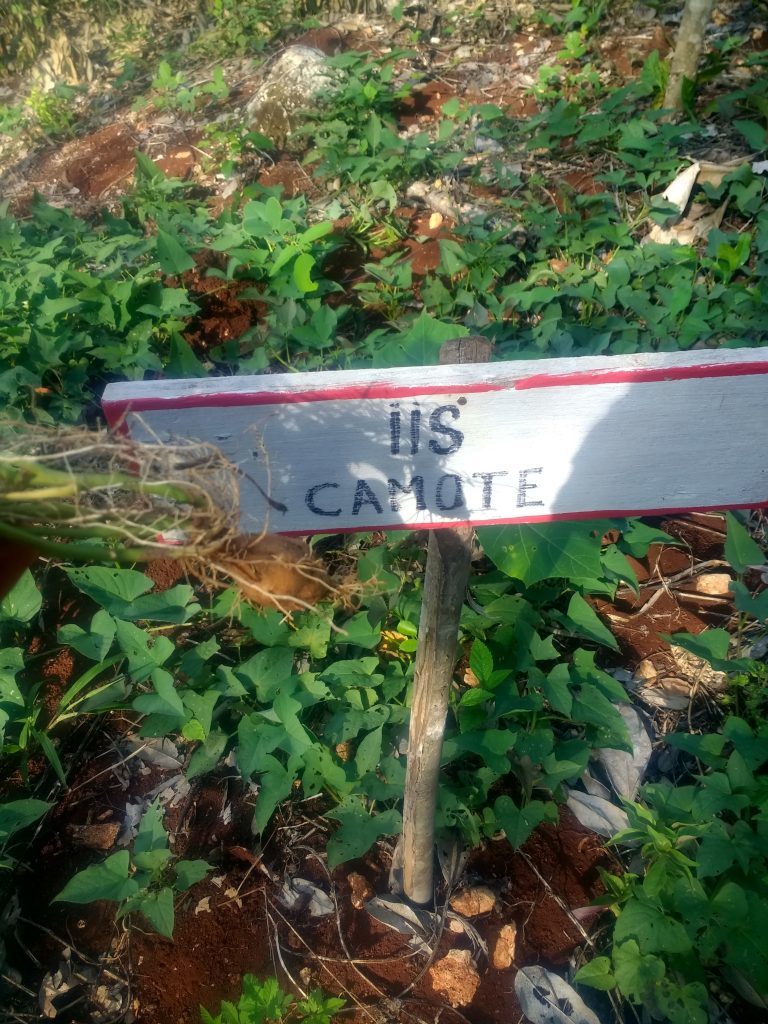
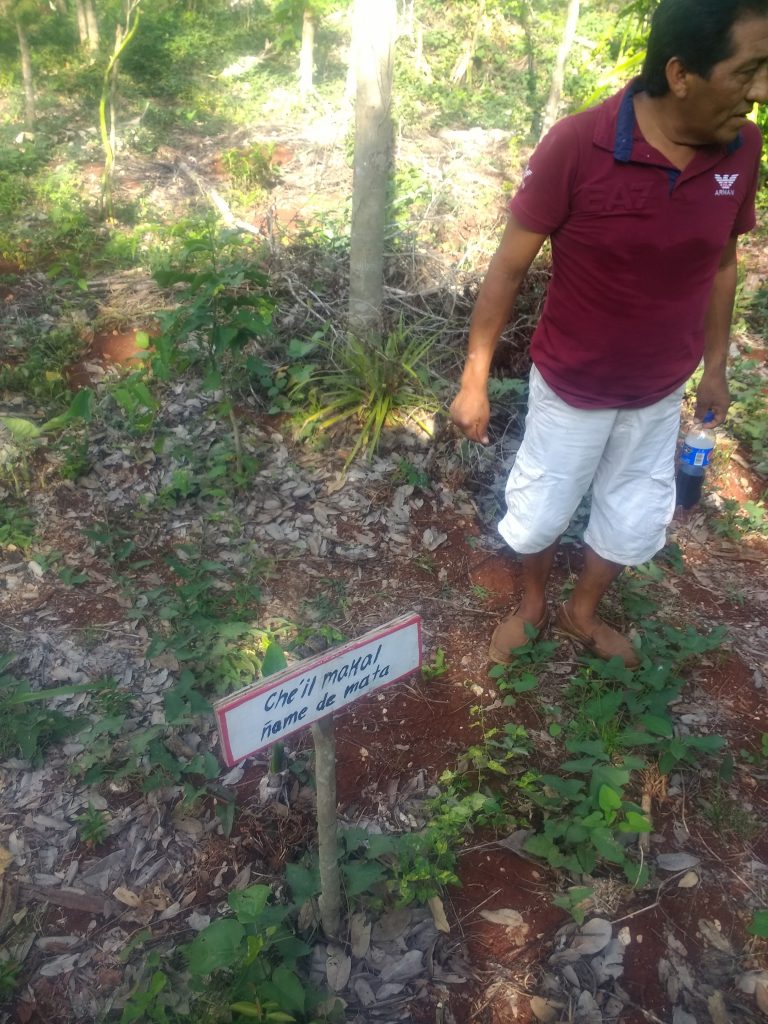
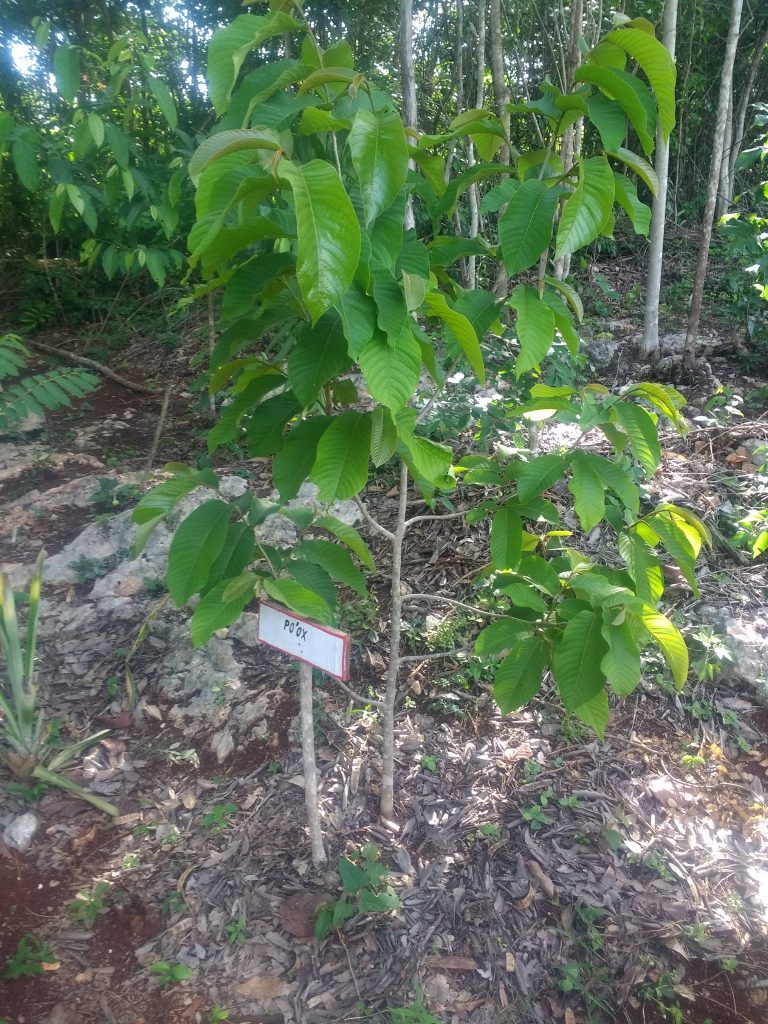
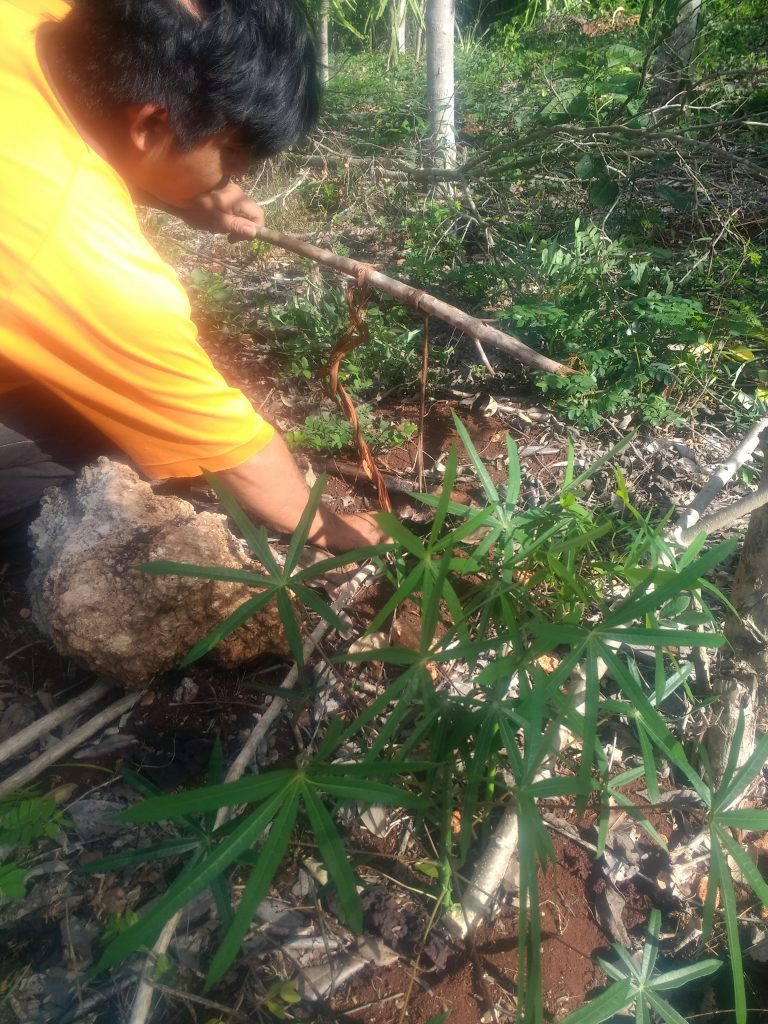
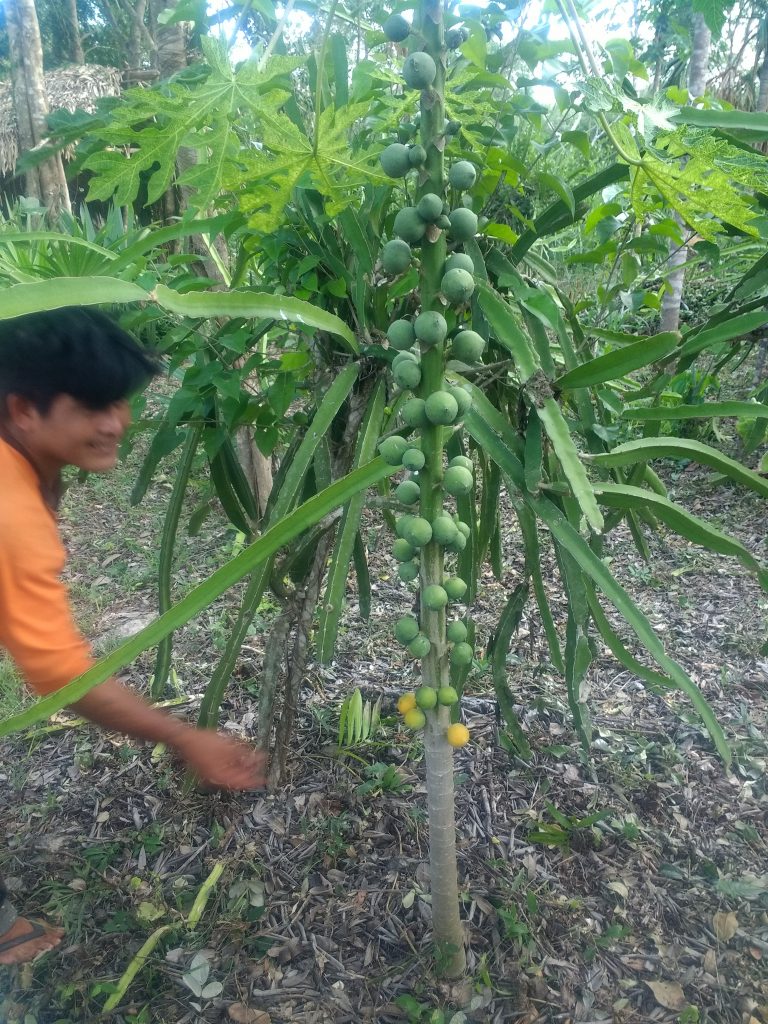
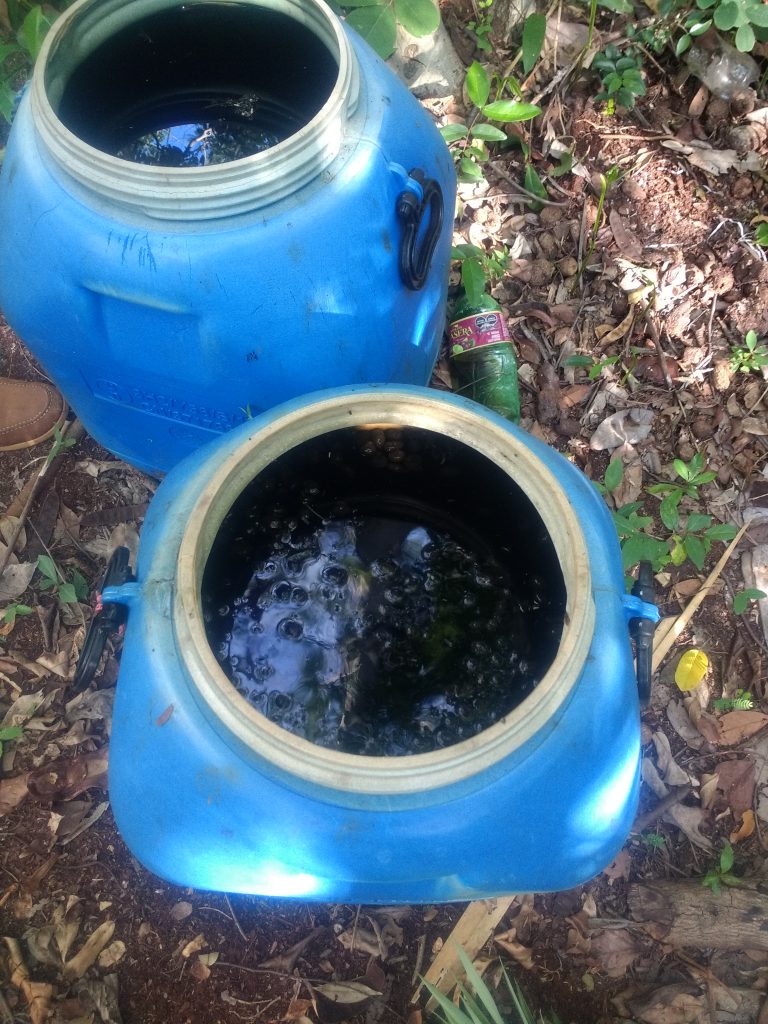
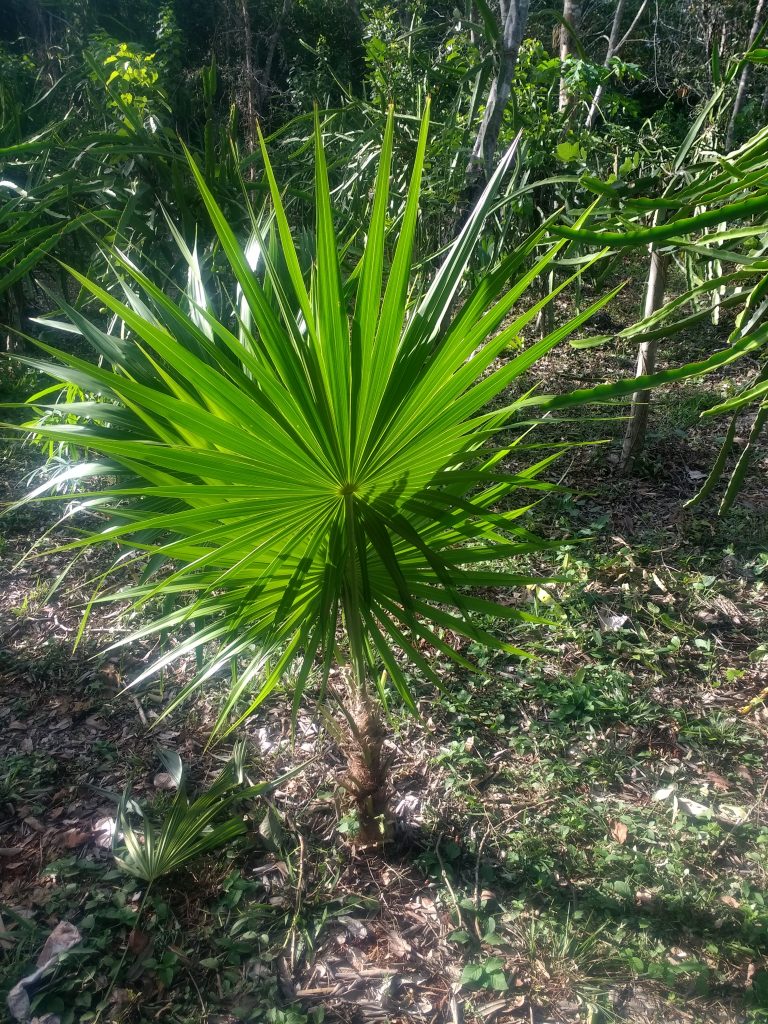
The difference between the pitahaya milpa and the traditional is striking. When walking around Armando’s cultivated jungle, I heard the orchestra of birds and insects above me, I smelled the perfume of the flowers wafting through the air, I sensed the breathing, crawling and hopping movement of life all around me. Later, when Armando so me the recently cleared wasteland of a neighbouring milpa, there was none of that. Instead there was a black carpet of scorched earth and the presence of death.

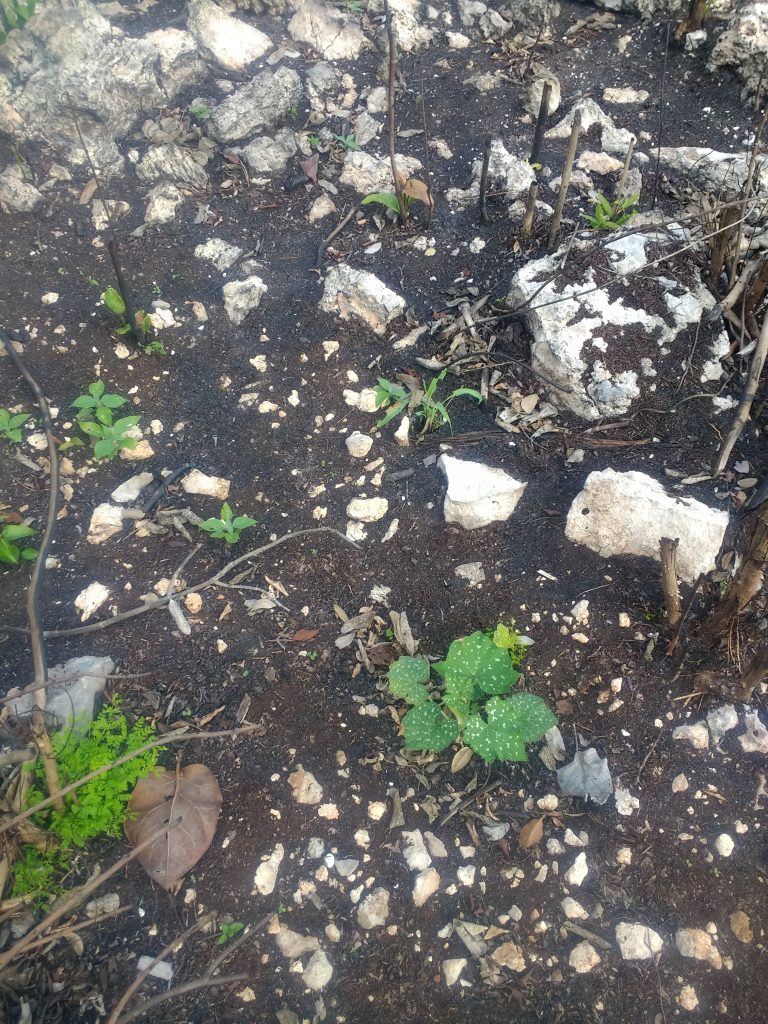
However, although the pitahaya jungle is no doubt a model of sustainable agriculture, it is not an all-purpose replacement for the traditional milpa system. Nor is an all-purpose replacement needed. Armando developed a way of farming that solved the wider social and environmental challenges of his times, suits his particular needs, and works in the local surroundings he finds himself it. And while there is no doubt that the pitahaya production could, and should, find wider application, so could many other methods of agriculture. While Armando decided upon the pitahaya, another person might develop an entirely different method that works just as well. There is strength in diversity, and if every farmer took the same imitative as Armando, learning to listen to nature, figuring out how they can work with it according to their own needs and abilities, rather than following some abstract template, then we would be on much more environmentally secure footing than we currently find ourselves on.
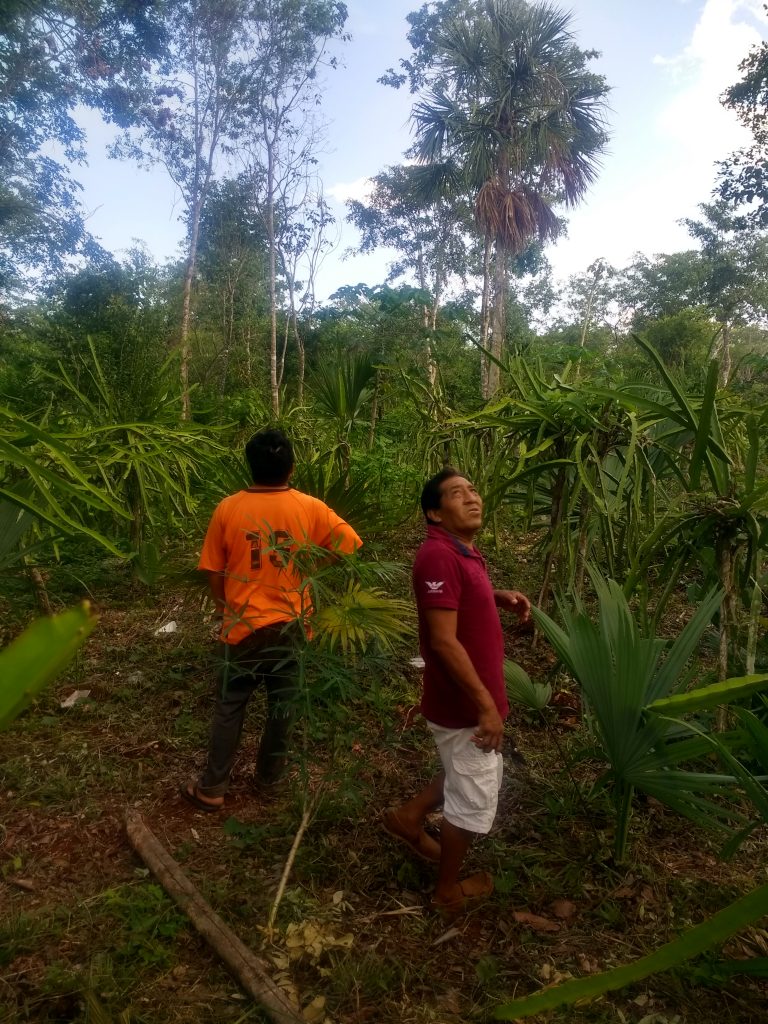
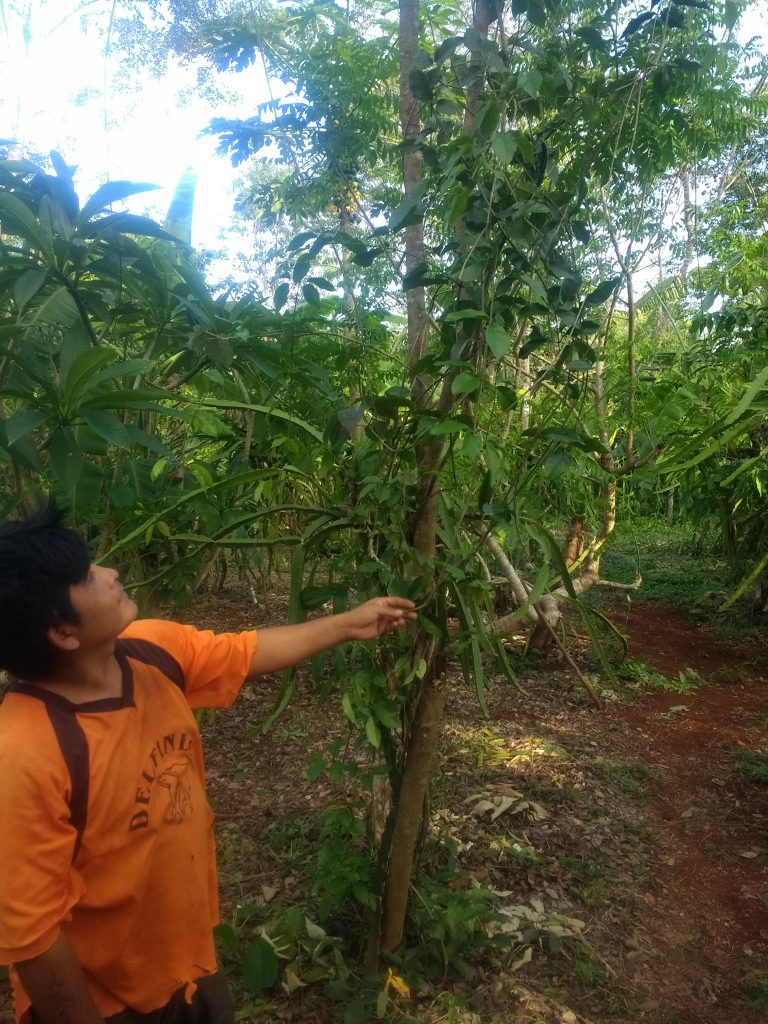

Neither is this article suggesting that the traditional milpa should be entirely abandoned. For all it’s benefits, the production of pitahaya does not produce the same nutritionally balanced diet of the three sisters. We could not survive on pitahaya alone, even with all the other fruits and vegetables that Armando was growing. Although the cultivation of annual grains has its problems, there are few things that can match cereal crops in terms of calories per hectare (with nut bearing trees being the most viable alternative). The milpa worked for thousands of years for the people of Central America, and did not lead to the same type of land degradation that can be observed in parts of the world that practised agricultural with animal powered tilling or animal husbandry (such as Europe or the Middle East). Quite the opposite, Central America is one of the most fertile places on earth, with lush jungle on all sides. Land degradation only really began with the arrival of the Europeans and the introduction of European methods of agriculture.
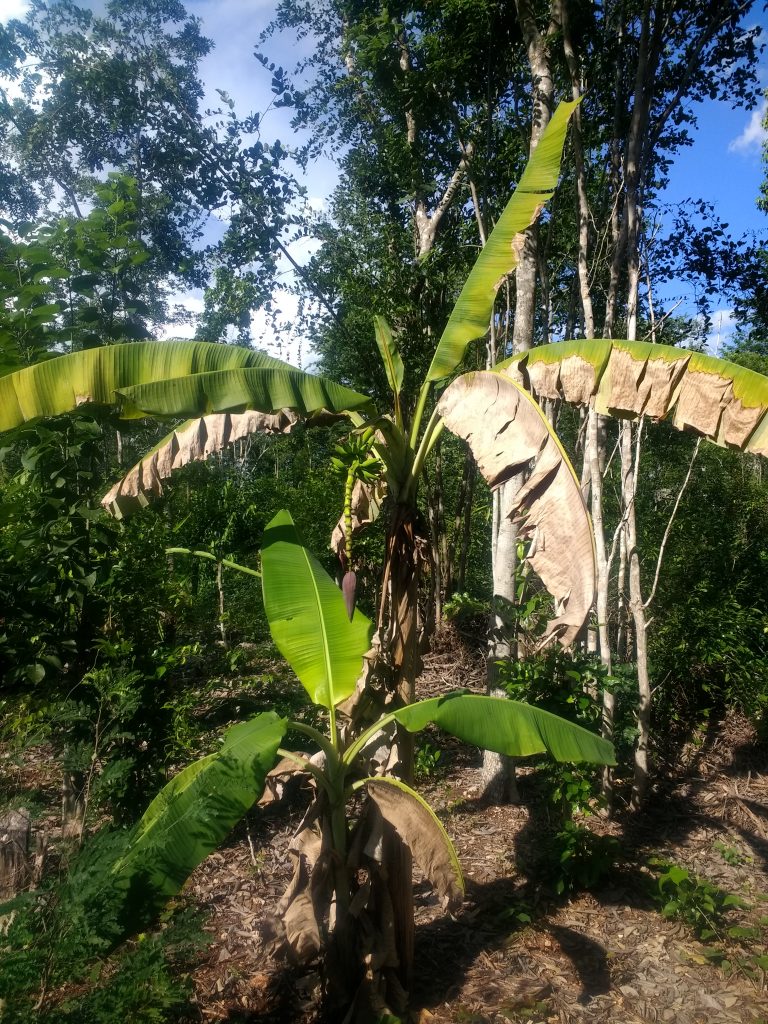
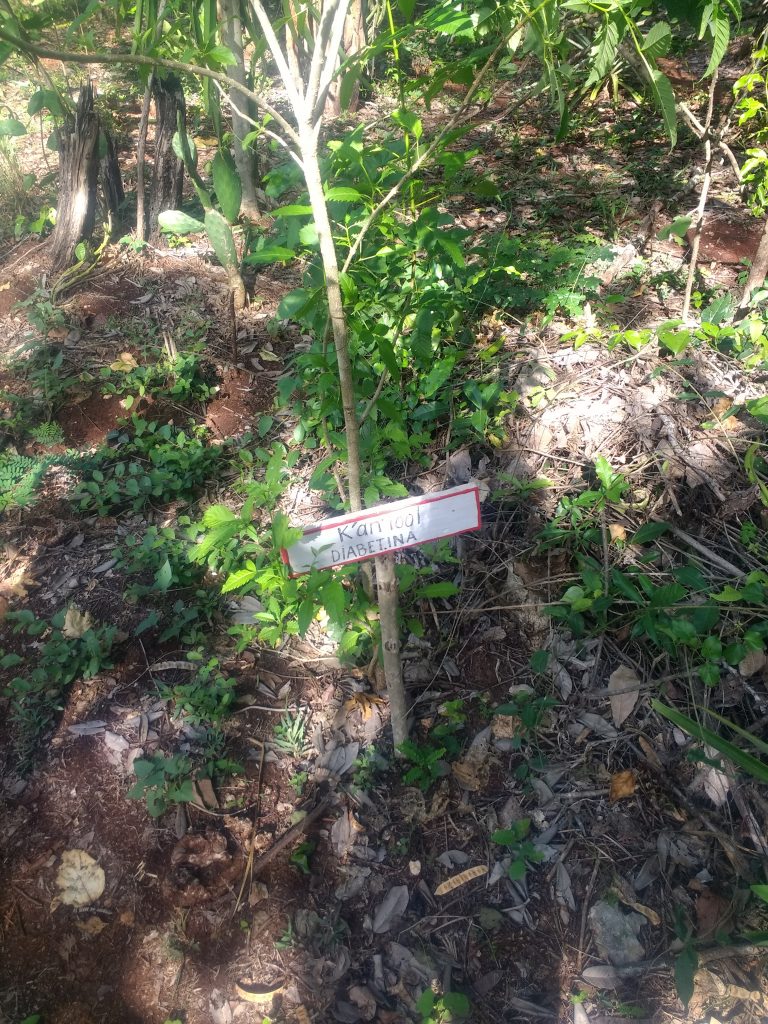
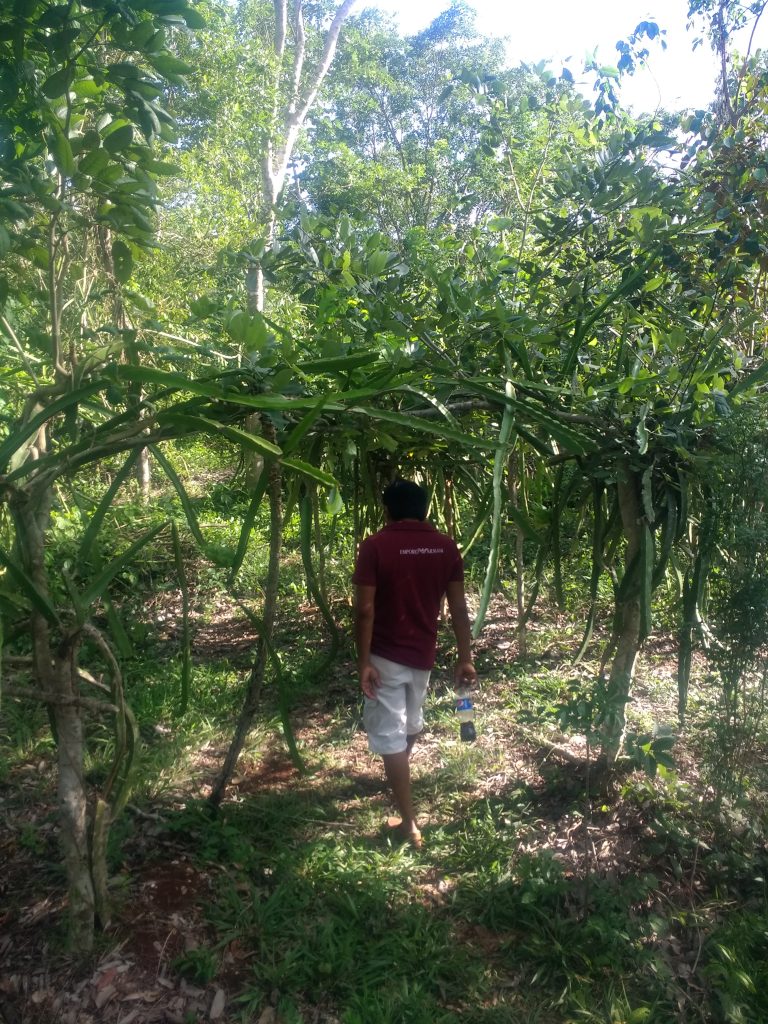
The day after visiting Armando’s farm, his dad, Teofilo Poot Cahum, invited me to see his farm, which was a mix of the traditional milpa and pitahaya production. It was here that I could experience the true brilliance of the traditional milpa system. Unlike Armando’s neighbour’s milpa, which was a huge area that had been indiscriminately cleared with fire, the expertise of Teofilo’s selective burning was clear to see. There was a few long and distinct rows, surrounded by carefully managed jungle. These rows had been planted with the three sisters, along with sugar cane and several other sun loving crops. In order to deal with the lack of rain, Teofilo hopes to dig a well at some point, to allow him to irrigate his crops in May. Like Armando, Teofilo showed me a huge variety of other plants that he was cultivating, or were simply growing wild, which served as medicine, or food, or building material, or some other purpose. But what was also clear was that these plants were not just thought of in terms of utility, but rather each plant had some spiritual and cultural significance.
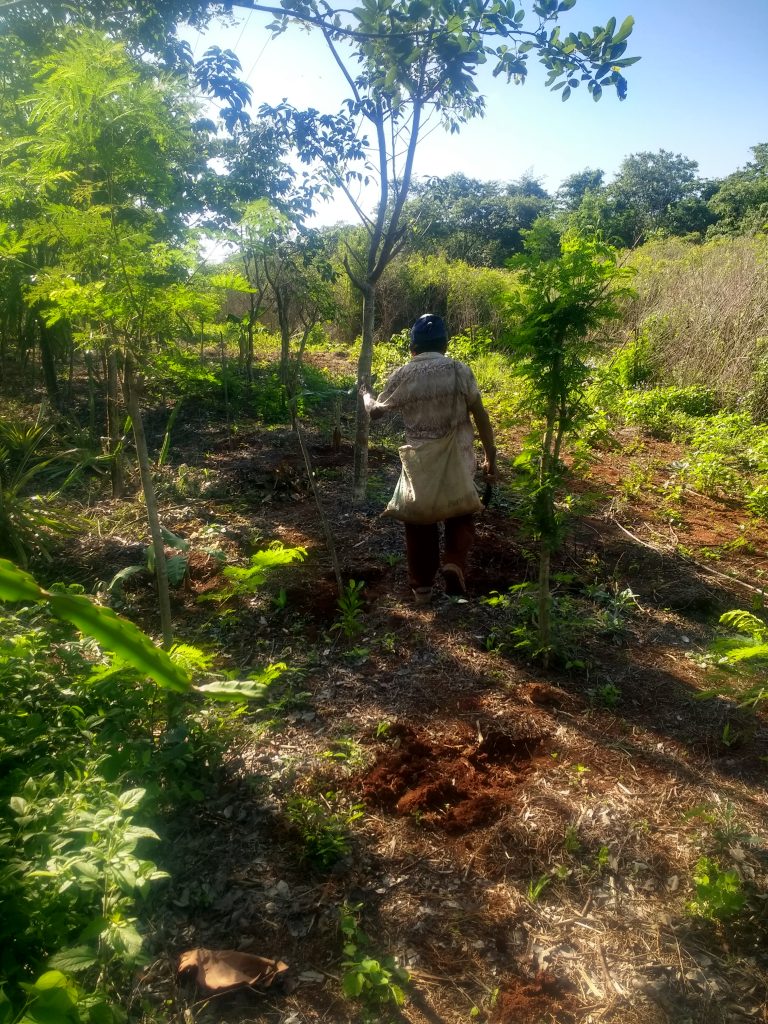
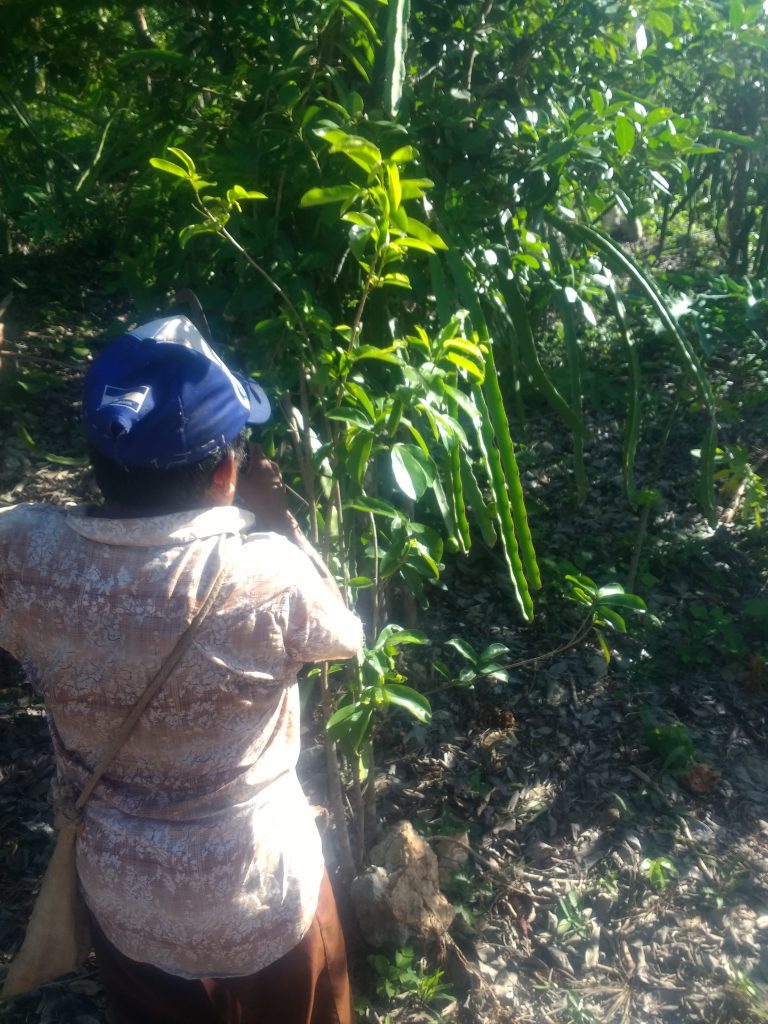
Teofilo told me that me that one of the reasons he found the continuation of the milpa so important was so that his sixteen grandchildren had a chance to eat the fruits of their native soil. He told me of his youth, going to the mountains to find all the of nature’s sweet treats. He told me that this was a part of who he was, of who the Mayan people are. These were clearly formative experiences, connecting him with his ancestors, who for many generations before him went to the same mountains to collect the same fruits, through the medium of their natural surroundings. And this is something which is today being lost. Teofilo lamented the fact that many of his grandchildren seem to prefer drinking coca cola, or some factory produced sweets, than the local fruits. And he rightly pointed out that although he was 78, he was still very fit and strong, going to work on his milpa everyday; a fact he puts down to his natural diet (although he admitted that he enjoyed a beer in the evening).

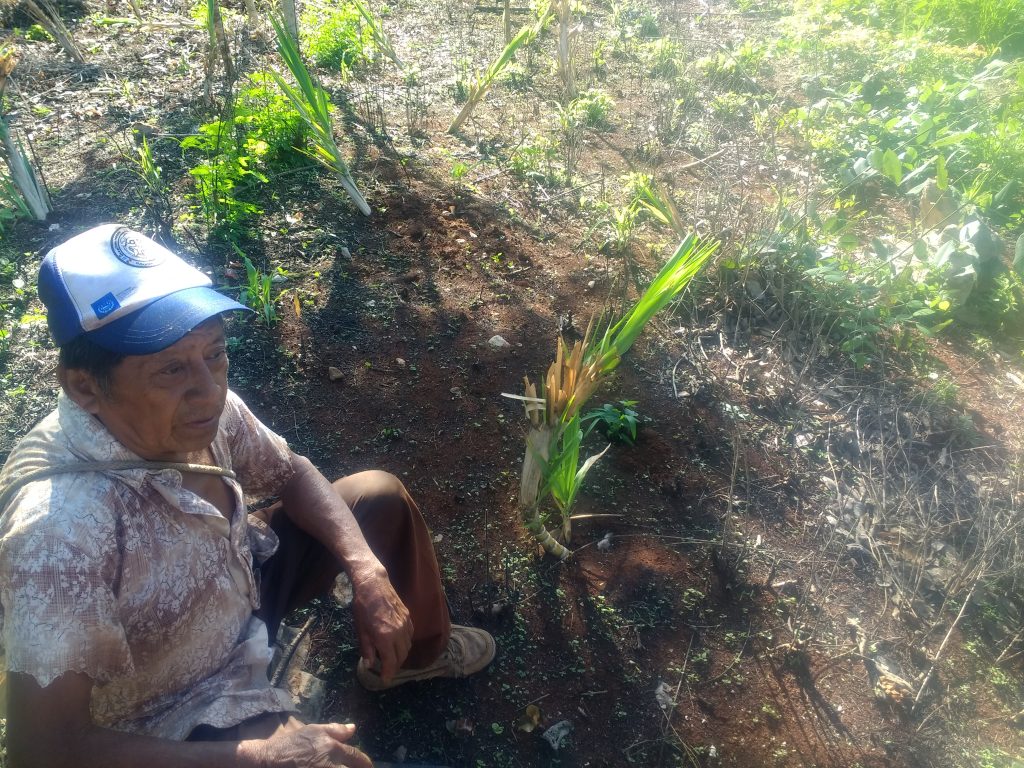
Spiritual Agriculture
One of the things that most impressed me about Mayan agricultural is that it is about more than just growing food. It is also a way of connecting with the natural world; a way of building a relationship with one’s community, as well the people come before you and the people who will come after you. Mayan agriculture is about harmonising oneself with the wider universe through symbols and ceremonies, giving one’s existence a greater meaning. The universe began with the creation of the earth and sky. To connect these two spheres a ceiba tree was planted. The roots of this tree reached into the depths of the earth, it’s branches up to the heavens, and in between, at the level of its trunk, would be the realm of other plants, animals, and, later, human beings. We were created from a mix of corn flour and the blood of the Gods. And it is upon these Gods of nature that we are dependent.

Every year the Mayans of Yucatan celebrate the festival of Pa Puul, which means ‘the breaking of the pots’. Beginning in the morning, children would collect different animals, usually aquatic reptiles, and put them into ceramic containers. Later, the pots would be broken, making a sound like thunder. This ceremony helps brings the rain to the milpa, and celebrates the cycles of rebirth and renewal. Another important event in the production of maize is the Sac Ha, in which a special drink is prepared from maize flour mixed with dew, or water from the depths of a cave. The drink is then offered up on a special alter and drank. Another important date on the Mayan calender is the Nan Pa’ch, a harvest festival offering thanks through music, dance and the making of dolls using ears of corn. It is through this universe of meaning and these annual celebrations that Mayan agriculture creates more than just food. And this is not something unique to Mayan culture, essentially all agriculture communities throughout history used methods of farming that not only cultivated crops, but also cultivated communities and a sense of spiritual identity. European culture was no different until the ‘rationalisation’ and industrialisation of agriculture in the modern era. In the past few centuries a number of important transformations have taken place.
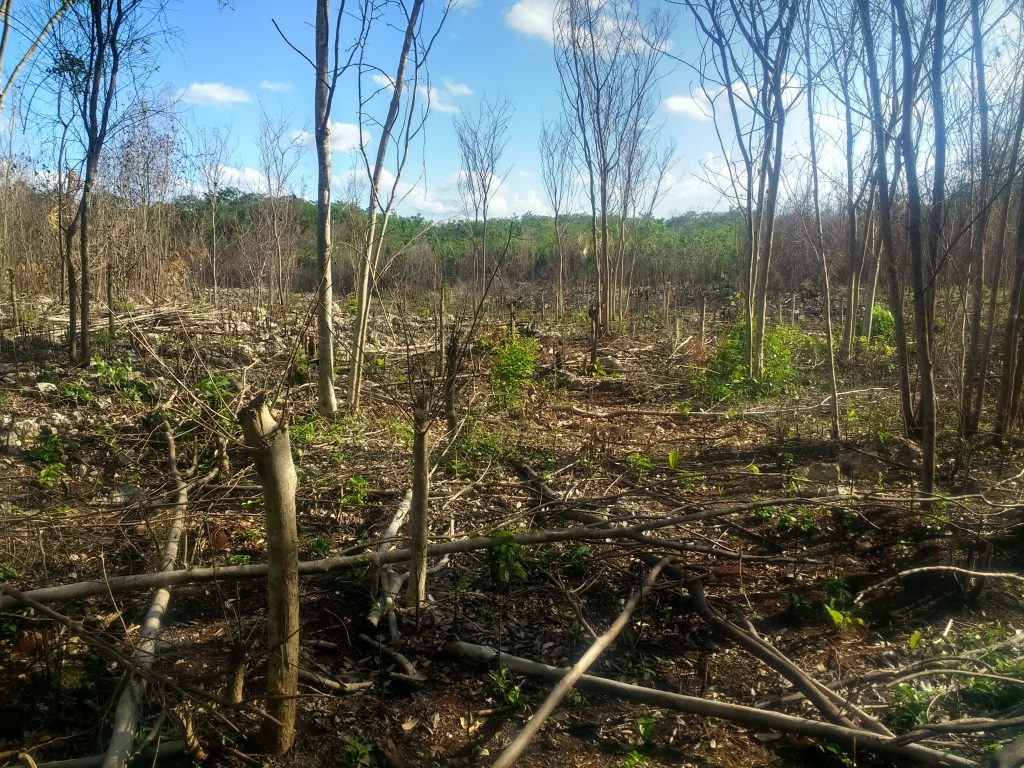
Whereas ancient Europeans understood nature as something inherently mysterious, as something to be respected, feared and praised; modern Europeans came to different conclusions. After some scientific achievements, and the development of industrial technologies, we became proud. We started to believe that we understood how nature functions. We even imagine that we could improve upon nature through intensive human intervention. This is the basis of modern farming, which refuses to co-operate with nature on any level and instead creates ‘ecosystems’ entirely designed by human beings. We first destroy whatever nature exists in the land that is to be cultivated. Then we make our own fertilisers, our own irrigation systems, plant genetically engineered crops, and, just to be totally sure that nature will not interfere, spray our crops with a diverse range of poisons. On top of this, instead of working the land with our hands and spirit, we use huge industrial machines to regiment the countryside, transforming them into space that resemble factory production lines. All of these developments have driven a wedge between us and the natural world.

And modern agriculture fairs no better in its ability to create community or spiritual meaning. Modern industry has meant the destruction of local economies everywhere, as local artisans producers were not able to compete with modern forms of production, based on energy intensive machinery and a highly centralised mass of exploited workers. The destruction of local economies has meant the slow death of rural communities, as most people were forced to emigrate to industrial centres for work. Coupled with these economic trends was the rise of private property and the ethic of individualism. Instead of many hands working over the fields to provide a community harvest, a single farmer would work over his private land with huge machines and synthetic chemicals. Within a few centuries the millions of European village communities that were once based around the land, around local production, around tradition, were gone; and people began to base their existence on global markets and the State. These developments transformed farming, once a form of spiritual practice, into a purely commercial activity. Like most other activities in industrial society, it is about producing commodities for the market. No deeper meaning is invested in this most fundamental of human activities. Reflecting these social transformations are the modern festivals, ceremonies and rituals, which have been divested of any deeper meaning and reduced to consumer events.

Modern farming has as its aim the efficient production of crops. Even on these terms it has proved to be a spectacular failure. Although its outputs are no higher than well developed indigenous forms of farming, its energy inputs are gigantic – requiring huge industries and a incredible resources to function. This is without even looking at long term destruction of ecosystems and how ‘efficient’ that will turn out to be. But if we take a step back from the modern understanding of agriculture, we can see that farming was never just about growing crops. To a society which tries to measure everything in number, things like sense of community or spiritual well being become difficult to understand. They can’t be quantified or measured, or put into graphs. But they are an essential part of human existence. Even many sustainable forms of agriculture often takes a purely scientific, or even economic view of farming, missing out on most of the most important elements of what it means to be a farmer or live in an agricultural community. In the words of Masnobu Fukuoka ‘The goal of farming is not the growing of crops, but the cultivation of human beings.’ This cultivation of the human spirit is evident in Mayan agriculture.
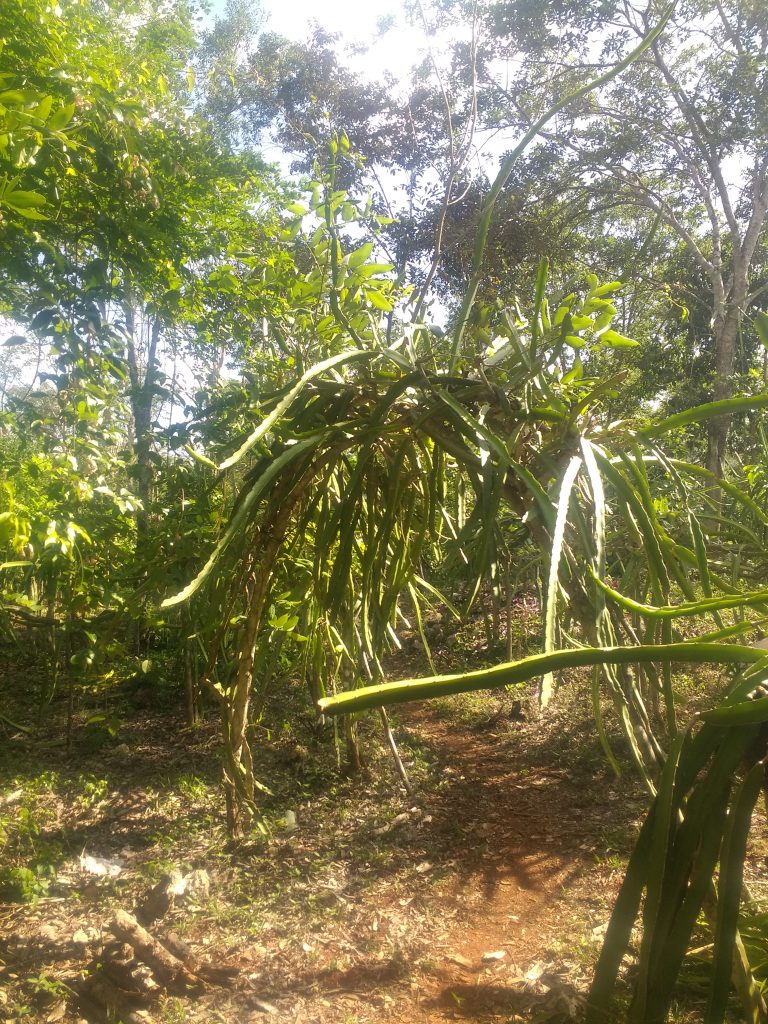
Conclusion
Today the future of the milpa is uncertain. In Yucatan more and more people are moving to the Caribbean coast for jobs and no longer working their family milpa. Armando sees this as a positive development, as the milpa system as it has been practised in the last few decades, with lower harvest because of the rain and more indiscriminate burning of jungle, has been doing damage to the Yucatan jungle. On the other hand, if practised in a way like Teofilo, the milpa of the three sisters still surely has an important role to play in the future of Central American farming. As well as being a Mayan culture reservoir, it has proved to be an effect way of feeding people for many millennia. The worst of both worlds would be the continued expansion of industrial farms and cattle ranches.
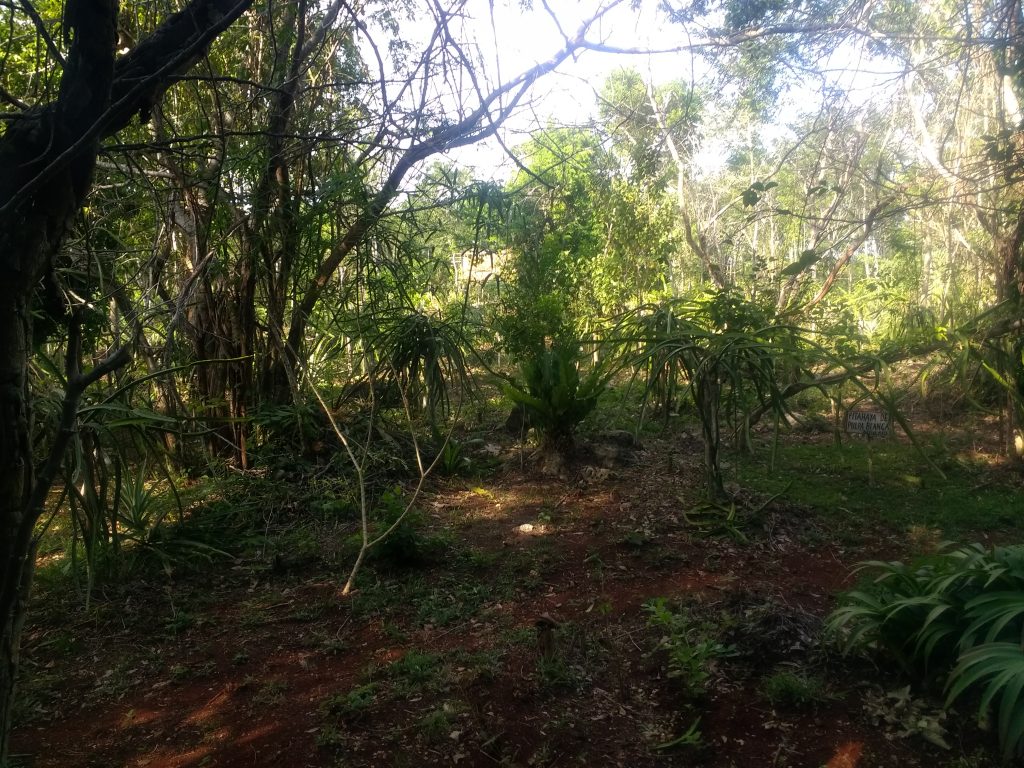
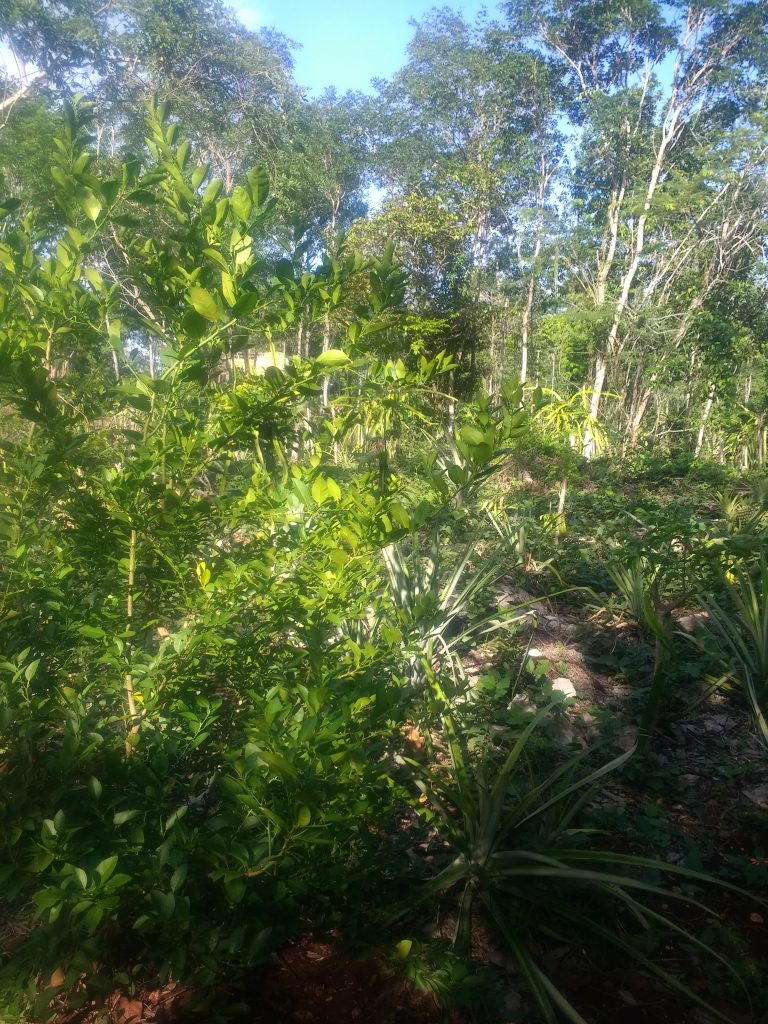
One thing is certain however; the development of new types of milpa, adapting tradition to the contemporary world, proves that Mayan culture is alive and well. The milpa, like all forms of culture, does not exist frozen in time. It is not something that should be exhibited in a museum or confined to the pages of a history book, it is a dynamic and developing framework that can help the Mayan people, and the world, meet the challenges of contemporary world.
** Much appreciation to the family Poot Chable for sharing with me about the Mayan culture and their own innovative methods of agriculture 🙂 **